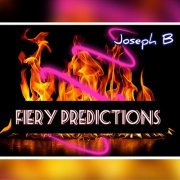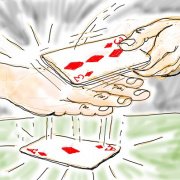Cards in Magic & Mentalism: page 64
Subtopics
Self-Working or Sleightless DIY Playing Cards Moves & Techniques ACAAN Stacks Marked Gaffed Rising & Levitating Manipulation & XCM Svengali Torn and Restored LinkingAuthors
Products
Ivy
Larry Travis
Here are six card magic routines, plus variations on two of them. All are truly impromptu, meaning they can be done with a borrowed, shuffled deck of ordinary cards. Some sleight-of-hand is required.
Synaptic - you reveal their thought-of card by "tuning in" to their senses
Maybe - an in-the-hands Open Prediction
Sweep - they choose a card through a visualisation process, but you knew their choice beforehand
Little Sympathy - impromptu sympathetic cards
Royal - a variation of Little Sympathy
Silver - they choose every card for two hands of poker, and you reveal a photographic...
Four-midable Card Magic
Mark Leveridge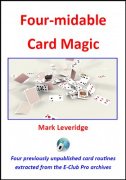
The Four-midable Magic Series comprises of specialist ebooks, each of which supplies four effects of a specific type.
This first volume in the series teaches four card routines that require little or no sleight of hand, and are well structured to produce clear magical card effects. They are clearly described in easy-to-follow numbered sections, supplemented by a total of 39 colour photo illustrations.
- Introduction
- Royal Flush: the magician uses magic to produce a Royal Flush from a shuffled deck of cards.
- Big Deal: a spectator shuffles a deck and cards are dealt face up onto the table...
Maybe You Think
Joseph B.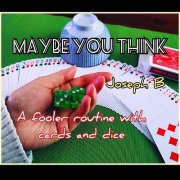
Determine the card selected and the sum cast with two dice in a novel and very deceptive way.
You show a deck of cards, shuffle it and while you look away the spectator throws the two dice, adds the points shown, removes that many cards and remembers the lowest card in the removed packet. The dice are covered so that the performer can't see them. Now comes the unusual thing. The removed packet is inserted by the spectator somewhere in the middle of the pack. Then the spectator cuts and with a rosetta shuffle the cards are shuffled. This is immediately followed by any number of riffle and...
How To Do 60 Tricks with Cards
A. Anderson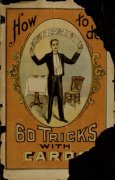
Embracing all of the latest and most deceptive card tricks now in use.
Excerpt from the introduction:
From the earliest ages the Magic Art has been highly popular among all classes; and, of its many marvels, Card Tricks, whether produced by sleight of hand, mathematical combinations, or mechanical means, are the most generally appreciated. Cards are to be found in nearly every home circle, so the prestidigitateur always has his principal tools at his finger ends. With them alone the most startling surprises can be caused, and the card conjurer has also the advantage of knowing that all his...
How To Do 40 Tricks With Cards
A. Anderson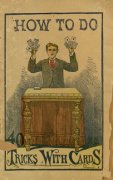
Containing many deceptive card tricks as performed by leading conjurers and magicians. Arranged for home amusement.
The book starts out with eleven hints or tips to keep in mind when showing card tricks. This is a mix of the usual tips for beginners, such as not performing a trick twice, or not explaining upfront what you intend to do, and more advanced or less common recommendations such as not performing a trick under its common name but rather invent a new name. This rule is particularly applicable today where it is so easy to search online for the name of a trick and discover its secret. ...
The Coin and Card Magic of Bobby Bernard
Val Andrews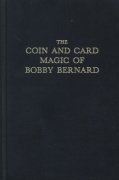
Excerpt from the Foreword:
This is a book about the close-up magic of Bobby Bernard ... There have not been too many books in the past on close-up as opposed to those devoted purely to sleights. Hugard brought out a great little book on the subject in the Thirties, and two decades later Bert Allerton's book was splendid. But now we have another book, which we feel sure will become a classic of its kind. The book which you hold contains a wealth of moves, tricks and routines, from which any discerning reader could select a repertoire likely to gain him a reputation.
Of particular interest is section 3 with several short essays and opinions on...
Conrad "Connie" Bush's Color Isolation
Joseph K. Schmidt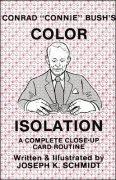
What is Color Isolation? It's a complete card act where the two colors of the deck — red and black — continually separate, each time under quite different and more mysterious conditions. The deck is handled and shuffled by the spectator throughout, yet the colors seem to instantly obey the magician's every whim.
From the performer's standpoint, Color Isolation is an interlocking series of effects, each building on the next. You can borrow a deck, have it thoroughly shuffled by the spectator and proceed. After shuffling the deck, the spectator simply cuts off a portion and counts them...
Totally Impossible
Joseph B.
Totally Impossible is a really strong effect with a very intriguing and fascinating method. The magician is able to cut with a knife to the card selected by a spectator. Simply and totally unbelievable. Obviously a magician fooler, as in the style of Joseph B. One of the most impossible divinations, one of the most dramatic localizations to add to your repertoire. You can do this with a borrowed shuffled deck. The Deck does not have to be complete.
- No gimmick
- No peek
- No one-way
- No short cards or gaffed cards
- No sticky stuff
- No force
Sleightly Easier
Ken de Courcy
A book of alternative, easier, card sleights and tricks to go with them.
Excerpt from the introduction:
Many of the basic card sleights are not easy to do well. Take the Two-Handed Pass in which the top and bottom halves of the pack are transposed. The objective is to do it invisibly, which is just about impossible. To cover the action some very strong misdirection is required ... or an alternative method. This little book is about such alternative methods ... easier ways to bring about the same results. But because sleights, in themselves, are useless, I've endeavoured to include a few...
Yosoku
Joseph B.
You can do this with a borrowed shuffled deck and four jokers you prepared beforehand. The spectator shuffles the deck. The performer cuts it into six packets. The spectator chooses four of these packets by placing the four face-up jokers on any of the four packets. These packets are cut by the spectator. The four cards lying next to the jokers are pulled out of the packs. Their value is added and that many cards are counted down in the remainder of the deck. The card selected this way is predicted on the backs of the four jokers.
1st edition 2022, video 17:15.
It Can Be Magic
J. Stewart Smith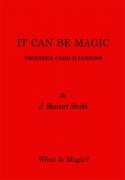 This collection includes 13 baffling card mysteries. Close-up magicians who know their craft rave about Smith's work, both for its presentation and its methods.
This collection includes 13 baffling card mysteries. Close-up magicians who know their craft rave about Smith's work, both for its presentation and its methods.
PARTIAL CONTENTS:
- A Cocksure Choice
- Topsy-Turvy
- Without Doubt
- Invisible Power
- A Weird Event
- A Surprising Revelation
- A Transformation
- In Like Manner
- The Survivor
- A Magical Restoration
- Hide and Seek
- At Ease
- An Interchange
"Within these pages the reader will find many new effects. He will also discover a few oldies in new dress. But most of all he will find good, effective card tricks that he can perform with a minimum...
Card Circus
A. P. Sreenivasan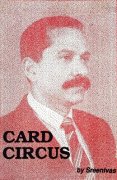
Excerpt from the preface:
This book is primarily intended for those who are familiar with card magic. I have performed these effects under many conditions with very good response from the audience. Some moves are simple, some are difficult, but all are natural. All my own sleights and some of the standard sleights are explained in detail.
- Preface
- APS Rising Cards
- Slow Motion Aces
- Red And Blue All The Way
- Incredible Sandwich
- Acrobatic Card
- Strange Deck And Triumphant Aces
- Turn Over Herrman Pass
- Meet Sreenivas
This ebook includes more than 130 photos to illustrate the moves...
Dream Card Light
Paul A. Lelekis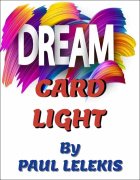
All patter and two excellent videos are included.
My favorite effect of all time is my version of Dream Card, which was in my most popular e-book, My Favorites, and I have received accolades from professional magicians around the world for this effect. My second favorite is Dream Card Light which I have been very apprehensive about sharing because it is such a powerful effect - and it's easier to do than Dream Card ... and I've loved this trick for years.
This is more than just an impossible effect ... it is theater. The patter is so very powerful, that it is exactly what will be remembered most - and...
Irv's Triple Transposition
Irv Weiner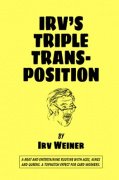
Add to your arsenal of outstanding close-up effects with this hard-to-find manuscript from a recognized master of deception. The effect is simple and direct: Four Aces change places with four Kings, which are later found face-up in the deck.
Meanwhile, in the pile formerly occupied by the Kings, are cards that match one previously selected by a spectator.
Or, as Canadian reviewer Sid Lorraine says:
"Aces in one pile, Kings in another. The Aces and Kings change places; then the Kings jump into the deck face up and the four remaining cards on the table turn out to be the four Queens."
Let...
Scripted #38: QVC Detective
Larry Brodahl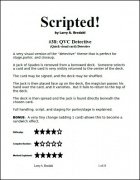
A very visual version of the "detective" theme that is perfect for stage, parlor, and closeup. Adding another card allows this to become a sandwich effect. The deck can be borrowed, shuffled, and card signed.
A Jack of Spades is removed from a borrowed deck. Someone selects a card and the card is very visibly returned to the center of the deck. The card may be signed, and the deck may be shuffled. The Jack is then placed face up on the deck, the magician passes his hand over the card, and it vanishes. But it fails to return to the top of the deck. The deck is then spread and the Jack is found...
Unseen
Paul A. Lelekis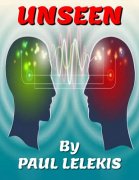
Four excellent ESP effects with cards - and they're easy to do.
The introduction provides a wealth of information about performance, spectator control...and even jokes. These four effects will fool magicians...just wait until your next club meeting...especially the title effect, UNSEEN!
1) UNSEEN is a devilishly clever effect that will fool anyone. Shuffle a deck of cards (it really is an ordinary deck) and display it, faces outward, for all to see - then shuffle it again. The performer never once looks at the faces of the cards. The spectator makes a free selection and then shuffles the...
Easy Touch
Ian Baxter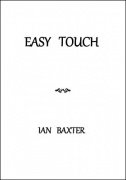
Paul Curry is a name that captures the attention of magicians everywhere, thanks to his famous card trick Out Of This World. Invented by Curry back in 1942, it remains an absolute staple for the self-working card enthusiast.
Not to be overlooked, however, was Curry's initial blast onto the magic scene five years earlier. Launched in 1937, Touch was (and still is) by any measure, a superlative card mystery. Over the years, variations from the experts have appeared in print. Some of these have been downright disappointing because they have been far too complicated, or like Curry's original, the burden...
The Queen's Soiree: Pet Effects 1
Dai Vernon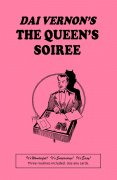
A remarkable transition effect using unprepared objects and little sleight of hand.
Four Queens from any pack are placed on the four corners of a square cloth. Two of the Queens are covered with squares of paper. One at a time, the Queens are put beneath the cloth thru which they penetrate and come up under the square of paper. It is amazing to see the identical card make the passage and appear under the paper along with the others, until all four are assembled under one paper.
Vernon's original methods and several puzzling variations - different from anything ever offered, no extra...
Ananke
Joseph B.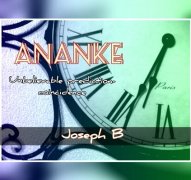
An incredible coincidence plus an incredible prediction that looks completely impossible. You present two decks to a spectator. They have a free choice (no force). The spectator takes one deck, and you take the other. Both of you shuffle your deck. Then the decks are exchanged. Each one gives their deck a final cut. Then each one puts their deck into their pocket. Then cards are withdrawn from the top of the deck and put face up on the table until a match of the face appears. Once a match appears the magician presents a prediction that was on the table the whole time in which he predicted...
TCF: The Counting Feint
Bob Farmer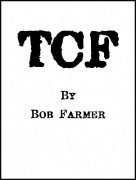
Once more, with this new 3.0 edition, all previous editions are now completely obsolete.
Now added is the "Mendoza Countdown," the precursor to the Capehart Countdown (see below) and the version explained here may be just as effective because after the spectator mixes the deck it is spread face up to prove it really has been thoroughly mixed—thus the eventual revelation that the spectator has somehow found all the Aces, Kings, Queens and Jacks in suit order is astounding.
The "Capehart Countdown," won Chris Capehart a Fool Us award from Penn and Teller and is fully explained here. ...
Sneak
Raphaël Czaja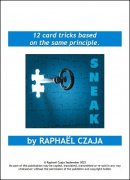
12 card tricks based on the same principle.
Sneak is a collection of tricks based on an overlooked principle that allows you to find a selected card under impossible conditions. Thanks to the use of one readily available fake card, every trick in the book is technically effortless. This means most of them are self-working while a couple of them require the ability to hold a break or execute a double undercut. Also included for the sake of completeness are impromptu versions (except for New Deck Joker), based on a variation of a well-known card force.
1) GOOD LUCK: A spectator cuts the...
It Just Happens
J. Stewart Smith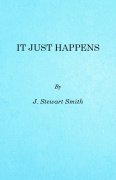
J. Stewart Smith continues with his professionally-praised run of card magic routines, this one containing seven appealing card mysteries. Like his previous releases, all the work is accomplished without knuckle-busting sleight of hand. Only a few simple moves are necessary, easily within the grasp of the average magician. Smith strives to strip down his creations so every move is logical, from an audience's perspective. There is no confusion as to what happens. It looks like pure magic.
PARTIAL CONTENTS:
- A Transformation
- The Nostalgic Trio
- The Unseen Passage
- Two Faces Up
- Pure and...
